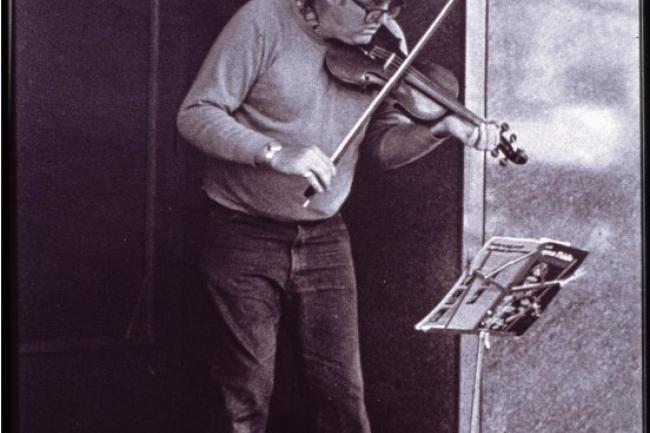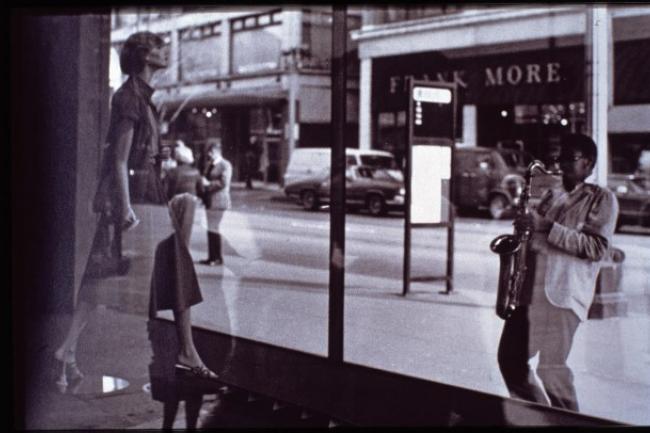Lesson Plan: What's the Story?
Visual Storytelling with the art of Eduardo Calderón
Written in collaboration with Western Gallery intern Ariela Ikezawa, 2023.
Files
| Attachment | Size |
|---|---|
| Lesson Plan: What's the Story? (472.67 KB) | 472.67 KB |
Grades 4-6
Big Ideas: Interpreting art as a story
Essential Questions
-
What is an image?
-
Where and how do we encounter images in our world?
-
How can visual imagery tell stories and help us draw connections?
This lesson emphasizes visual analysis and creative storytelling. Using the photographs of artist Eduardo Calderón, students will identify visual details and clues to help them write their own version of the ‘story’ behind the image.
Eduardo Calderón is a Peruvian photographer in the Northwestern United States, who is known for choosing image compositions that contain visual or narrative ambiguity. Born in 1949, many of his photographs are taken while Calderón travels through Latin America and Europe. A student of anthropology, a common theme in Calderón’s work is an exploration of everyday life, as the artist believes it is important to capture life authentically.
In 2023 the Western Gallery at Western Washington University (WWU) held the exhibition Arbitrary Borders. This show highlighted the work of over nineteen BIPOC artists and brought together 35 different pieces. Featured in this show are a number of well-established artists, including Marita Dingus, Jaune Quick-to-See Smith, James Luna and Eduardo Calderón. The exhibition included a plurality of themes and views, with many of the works touching on issues of identity and socio-political issues. While the exhibition closed in March of 2023, to ensure continued public access and to increase the diversity of artists represented on campus, many of the works from this exhibition will be installed in public spaces around campus.
Art Standard: Responding
- (VA:Re7.2.4) a. Analyze components in visual imagery that convey messages.
Literacy Standards
- RL.4.7 Make connections between the text of a story or drama and a visual or oral presentation of the text, identifying where each version reflects specific descriptions and directions in the text.
- RL.4.3 Describe in depth a character, setting, or event in a story or drama, drawing on specific details in the text (e.g., a character’s thoughts, words, or actions).
- I can use the visual details of an image to draw connections and create a story.
- I can explain the choices I made when writing my story using visual details from the image as evidence.
- Access to Eduardo Calderón’s work is available on the ArtsWA website. We suggest Street Musician #1 (1980) and Street Musician #2 (1980)
- Writing notebooks or paper, pencils
- Introduce students to the artist Eduardo Calderón and his artistic approach.
- Photographer Eduardo Calderón (1949-present) describes how he likes to take photos of his subjects as they are “writing their own story” through “gesture, posture or positioning.” Using a neutral, unbiased lens, Calderón takes photos of subjects in the midst of their own lives. Stylistically, he often leaves the viewer in a state of mystery and allows the person viewing each image to puzzle out the story of each photograph for themselves.
- Either as a class or in small groups, students should quietly observe Calderón’s Street Musician #1 (1980) and Street Musician #2 (1980) for several minutes. Invite students to examine the various details that are in the photograph and consider what story those details might be telling.
- For some classes a more active looking session can be more productive. In this case, have one minute of quiet looking with the image. Then open it up to the class to call out their observations and thoughts about what’s happening in the scene.
- Setting a timer for 5 minutes (or longer, depending on the writing stamina of the class), ask students to write the story they see Calderón telling in one of the photos. To help students connect with the photograph and imagine the story, encourage them to think about their own experiences. Have they witnessed a similar scene in their own life? What were they doing that day? What was that experience like? Guiding questions can include:
- What is happening in this image?
- Who are the people in the photograph?
- Who is the main character in this story?
- What is the setting?
- What does this setting sound like? What does it smell like?
Students should include visual evidence from the photograph they select as details in their written story.
- Once the writing time is complete, students should turn and talk with a partner or small group to describe the story they wrote.
- Close this lesson by reiterating that power of visual imagery to tell a story. Describe to students that this exercise has demonstrated that visual details and personal experiences can help us connect to an image and the story behind it.

